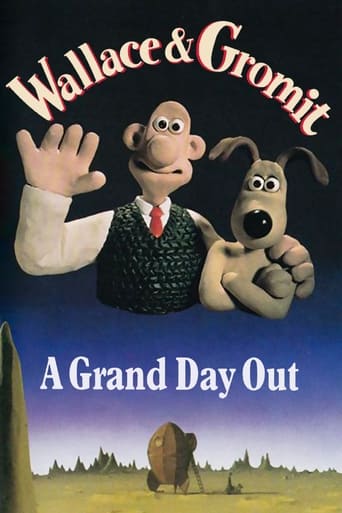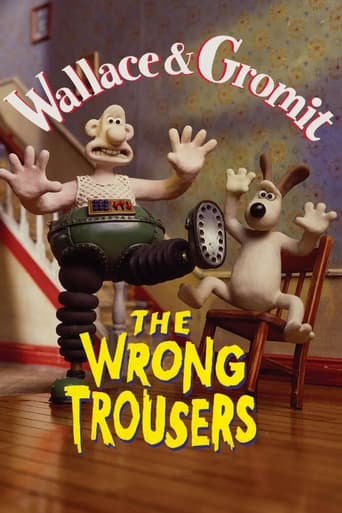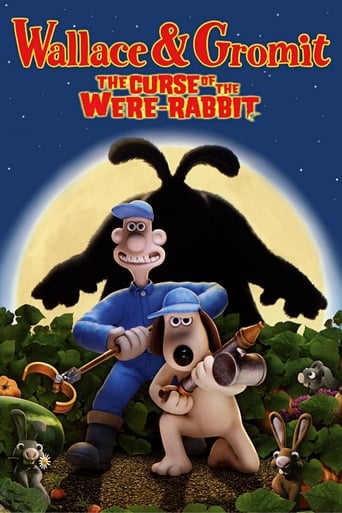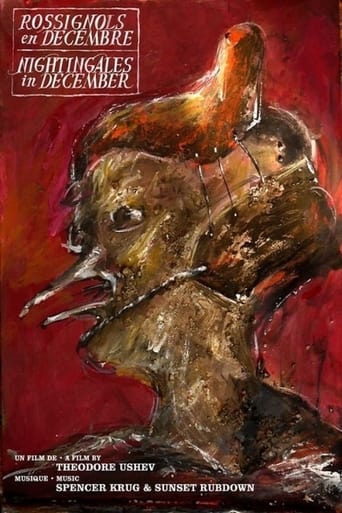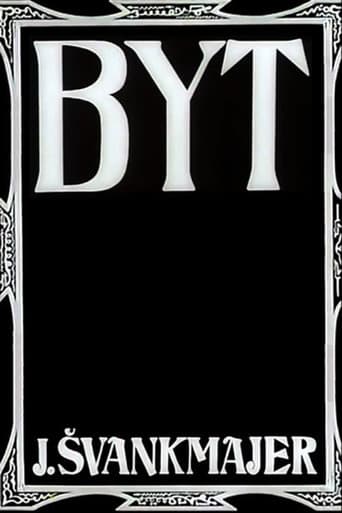
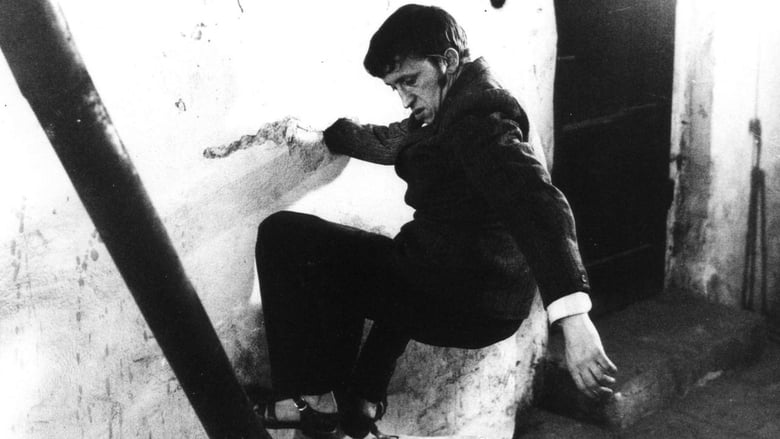
The Flat (1968)
A man is trapped in a sinister flat where nothing seems to obey the laws of nature.
Watch Trailer
Cast


Similar titles
Reviews
I would tend to disagree with the previous statement that this movie was just an exercise in creativity without a real point. I found it to be deeply symbolic of the pressure Eastern Europe was under to follow rules in a world that did not follow the rules itself. The struggle of Joseph (his name is revealed when he writes it at the end) is both comic and easy to sympathize with, and in that it reminded me faintly of Charlie Chaplin's films. While it is extremely enjoyable to view superficially, delving just a little deeper is incredibly rewarding.Joseph keeps on expecting for the room in which he finds himself trapped to give him some small bit of normalcy, and it keeps betraying him. His hopefulness is almost pitiful, but he's all the more likable for not giving up. When his hand gets stuck in the wall, he digs it out. He does not succeed at escape, however, because he is too preoccupied with following a set of rules that do nothing to help him in his plight. He can't eat his meal because, unlike the dog that comes out of the wardrobe, he is too civilized to do what needs to be done, and he quietly accepts the axe from the man with the chicken (...that sounds utterly ridiculous out of context, doesn't it?) and waits until he is left alone once more before attacking the door rather than following the man out before he can shut the door. What he finds behind the door, however, is a wall covered with the names of people who have been in the same room and faced the same problems--this is not a single man's struggle, but one faced by a multitude, which again ties back to it being about Eastern Europe rather than a single, arbitrary person.
There's something about art and artists. Sometimes the effect of the art isn't a conversation between the viewer and the artist, instead between the artist and the viewer. And often neither party knows it.Its particularly apparent when the artist is damaged in some way and he or she create art that conveys that damage. This is common, I think because when there is a human trying to reach us, we allow an inadequate vehicle. I think the effect is so common and so well understood that weak artists, artists who cannot create powerful work, feign this dynamic.Here we have an odd little student film, almost a student film. It conveys a world that doesn't work -- not comically but frustratingly as if it were deliberately teasing us. Whatever is behind this flat is evil.Watch closely and you will see that the film is rather incompetent. But we don't notice, because as with Tim Burton we see the strange dude who made it. And we imagine what type of man he would have to be, and under what conditions he lives.(I could have chosen a dozen filmmakers as examples and you would have equally known what I meant.) Either way, this is uninteresting.Contrast this to "The Cube" of about the same time, the one by Jim Henson, also a puppeteer making the bridge to film-making. It is based on much the same notions. Yet Henson's little project is a marvel of competence, several competences.What we have here instead is just a glass through which we see a sad man.Ted's Evaluation -- 1 of 3: You can find something better to do with this part of your life.
Great movie about madness and loneliness. I have seen only one Svankmajer film before this, it was "Down in the Cellar". It had some similar elements. This is much older. It reminded me of Beckett's "Film" and Polanski's "Tenant", from which the latter is in my opinion one of the greatest movies ever made. I don't know has Polanski got some inspiration from this? Anyway, comparing is stupid because these are all totally separate artistic achievements and all are great in themselves.This movie is really energic and full of ideas. It's bravely simple. This movie is really crazy, the guy is really hallucinating. You can't call this neurotic or paranoid anymore, this is truly psychotic. But it's funny, actually it's a comedy! I don't know where Svankmajer has got these ideas. But I know that if you would show this film in the army draft, you wouldn't have to go.
Svankmajer's first monochrome film, "The Flat" is about this late 1960's Czech everyman who has been literally flung into this dingy, primitive apartment. There he quickly discovers that reality does not work as it should; the man attempts to light a wood-fired stove, but water comes out, dousing the match; for no reason, the bare lightbulb begins swinging and lengthening it's cord, so it can bash a small hole in a brick wall, whereupon the light retracts into the ceiling. In the middle of the room there is a table with a meal (a boiled egg in a holder, soup, a tankard of beer, and a plateful of things that look like linked sausages.) The man sits down to eat, only to have the beer become a tiny doll's stein when he drinks it, then reverting to the (now-empty) tankard when he puts it down. He can't drink the soup, because suddenly the spoon has holes. He tries to break the egg, only to have it break the holder and fall through the table onto his foot, a painful experiance. The "sausages" are also inedible; they bend the fork prongs. The man then attempts to sleep in a bed, but it disintigrates into a large pile of sawdust. In the end, a man walks into the room in slow motion, holding a chicken and an axe. The protagonist takes the axe as the man glides back out through a second door. The door has no handle, so the everyman hacks it to pieces, only to find that it covers a wall. The wall is covered with names; the man adds his with a pencil.I went to the trouble of recounting most of the film to make a point, that this is an allegory of the secret police interrogations that went on after the Soviets reinvaded Czechoslovakia during the "Prague Spring" of 1968. In such an interrogation, the subject would be more and more disoriented by placing the person in a cell with no windows where the light (from a bare bulb) was eternally on, along with nonsensical questioning, irregular meal times, and bizarre arbitrary behavior by guards and interrogators. At the end of whatever time it took to break the prisoner, he/she would be forced to sign a confession, either written by the prisoner or concocted by the secret police. I suspect that the only reason that "Byt" survived was due to the literal-mindedness of Czech censors and the secret police.



